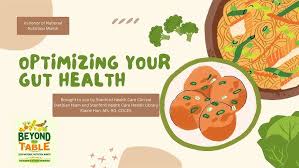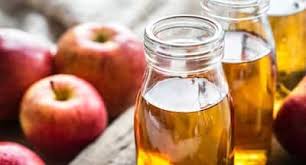Hummingbird Nectar Recipe: Hummingbirds are nature’s little wonders, known for their dazzling colors and rapid wingbeats.
Feeding these tiny birds is not just a joy to watch but also a way to support their survival. While store-bought nectar may seem convenient, making your own nectar is a healthier and more economical choice.
This guide will take you through the process step-by-step so you can prepare the perfect homemade nectar for your feathered friends.
Why Choose Homemade Hummingbird Nectar?
Store-bought nectar often contains artificial dyes and preservatives that can harm hummingbirds over time. Homemade nectar, on the other hand, mimics the natural sweetness of flower nectar and is free from unnecessary additives. Plus, it’s much cheaper and allows you to control the ingredients.
By offering homemade nectar, you’re encouraging hummingbirds to maintain their natural feeding habits while providing them with a safe and nourishing source of energy.
Understanding Hummingbird Dietary Needs
Hummingbirds primarily rely on flower nectar and small insects for their nutrition. Their high metabolism demands a constant supply of energy, which is why sugar and water are the perfect combination to replicate their natural diet.
- Sugar provides the quick energy hummingbirds need to sustain their rapid wingbeats.
- Water is essential for hydration and digestion.
By understanding these basic needs, you can prepare a nectar solution that keeps them healthy and happy.
Essential Ingredients for Hummingbird Nectar
Making hummingbird nectar requires only two ingredients:
- Water: Always use clean, fresh water. Avoid distilled water as it lacks minerals.
- White Granulated Sugar: Use only plain white sugar. Alternatives like honey, brown sugar, or artificial sweeteners can harm hummingbirds.
Ingredients to Avoid:
- Honey: It ferments quickly and can be fatal to hummingbirds.
- Artificial sweeteners: These lack calories and provide no nutritional value.
- Food coloring: Hummingbirds don’t need dyed nectar; they’re attracted to the red color of feeders.
Equipment:
- Saucepan
- Measuring cups
- Stirring spoon
- Hummingbird feeder
It’s crucial to use plain white granulated sugar. Avoid alternatives like raw sugar, brown sugar, honey, or artificial sweeteners, as these can harm hummingbirds. Skip the food coloring too—it’s unnecessary and potentially harmful.
Step-by-Step Guide to Making Hummingbird Nectar
Step 1: Gather Your Ingredients and Tools
You’ll need:
- 1 cup of white granulated sugar
- 4 cups of clean water
- A saucepan
- A stirring spoon
- A storage container or bottle
Step 2: Measure Ingredients
Use a 1:4 ratio of sugar to water. This ratio closely mimics the natural sugar content in flower nectar and ensures that the solution isn’t too sweet or too diluted.
Step 3: Mix and Heat
- Pour 4 cups of water into the saucepan.
- Add 1 cup of sugar.
- Heat the mixture over medium heat while stirring until the sugar dissolves completely.
- Once dissolved, remove the mixture from heat.
Why boil? Boiling ensures that the water is sanitized and the sugar fully dissolves, preventing bacterial growth in the nectar.
Step 4: Cooling the Nectar
Let the nectar cool to room temperature before pouring it into the feeder. Hot nectar can harm the hummingbirds or damage the feeder.
Step 5: Storing and Using Nectar
Store unused nectar in a clean, airtight container in the refrigerator for up to one week. Always check for signs of spoilage before refilling feeders. Replace the nectar every two to three days, especially in warm weather.
Tips for Feeding Hummingbirds Safely
- Clean Feeders Regularly: Wash feeders thoroughly with hot water and soap at least once a week, more frequently in hot weather.
- Avoid Dyes and Sweeteners: Stick to plain sugar and water.
- Placement: Hang feeders in shaded areas to prevent nectar from spoiling too quickly.
Best Practices for Hummingbird Feeders
Choose a feeder with red accents to attract hummingbirds naturally. Ensure it’s easy to disassemble and clean. Position multiple feeders at least 10 feet apart to prevent territorial disputes among birds.
Signs of a Healthy Hummingbird Habitat
- Frequent visits to your feeder.
- Birds appear active and healthy.
- Surrounding plants with flowers, offering natural nectar sources.
Mistakes to Avoid When Feeding Hummingbirds
- Using the Wrong Ingredients: Avoid honey, brown sugar, or additives.
- Neglecting Feeder Maintenance: Dirty feeders can breed mold and harm birds.
- Overcrowding: Too many feeders in one area can lead to aggressive behavior among hummingbirds.
Seasonal Considerations for Feeding Hummingbirds
During migration seasons, increase the amount of nectar you provide to support their long journeys. In colder months, ensure feeders are kept clean and full, as natural nectar sources may be scarce.
Common Mistakes to Avoid
Even with good intentions, some common mistakes can deter hummingbirds or harm them:
- Over-sweetening nectar: Stick to the 1:4 sugar-to-water ratio. Higher concentrations can harm hummingbirds’ delicate systems.
- Using artificial colors: Red-colored feeders are enough to attract birds; dyes in the nectar aren’t necessary and may be toxic.
- Failing to clean the feeder: Dirty feeders can repel hummingbirds and harm their health.
Benefits of Feeding Hummingbirds
Making your own hummingbird nectar has multiple advantages:
Environmentally friendly: By using your own feeder, you reduce packaging waste associated with prepackaged nectar.
Promotes bird health: Homemade nectar is free of harmful additives and closely mimics natural nectar.
Cost-effective: A bag of sugar can create weeks of nectar, saving money compared to store-bought options.
Fun Facts About Hummingbirds
Hummingbirds are fascinating creatures, and understanding their unique traits can deepen your appreciation for these tiny birds:
- Incredible metabolism: To fuel their high energy levels, hummingbirds eat up to half their body weight in sugar daily.
- Fast wings: Hummingbirds can flap their wings up to 80 times per second, allowing them to hover and maneuver mid-air.
- Migration marvels: Some species, like the Ruby-throated Hummingbird, migrate over 2,000 miles annually.
FAQs about Hummingbird Nectar Recipe
1. What is the best recipe for hummingbird nectar?
The ideal hummingbird nectar recipe consists of just two ingredients: sugar and water. Mix one part white granulated sugar with four parts water. Stir until the sugar is fully dissolved. Avoid adding food coloring, as it can be harmful to the birds.
2. Can I use honey or other sweeteners?
No, it’s best to stick with white granulated sugar. Honey, brown sugar, or artificial sweeteners can harm hummingbirds and should be avoided.
3. Do I need to boil the water?
Boiling the water is optional. It helps dissolve the sugar more quickly and ensures the nectar stays fresh longer, but you can also use hot water and stir thoroughly.
4. How long does homemade nectar last?
Homemade hummingbird nectar can last up to one week in the refrigerator. In warmer climates, replace the nectar in feeders every 2–3 days to prevent spoilage.
5. Is tap water safe for making nectar?
Yes, tap water is generally safe unless it has a high chlorine content. If you’re unsure, let the water sit out for a few hours to allow chlorine to evaporate.
6. What’s the best way to clean hummingbird feeders?
Use warm, soapy water and rinse thoroughly. Avoid harsh chemicals, as residues can harm hummingbirds. Clean the feeders every time you refill them.
Conclusion
Providing homemade hummingbird nectar is a simple yet rewarding way to support these amazing creatures. By following this guide, you’ll create a safe, nutritious feeding environment that keeps hummingbirds visiting your garden. From choosing the right ingredients to maintaining your feeder, every step matters in ensuring the health and happiness of your feathered friends.
Enjoy the delightful presence of hummingbirds in your backyard as they zip, hover, and sip the nectar you’ve lovingly prepared!



